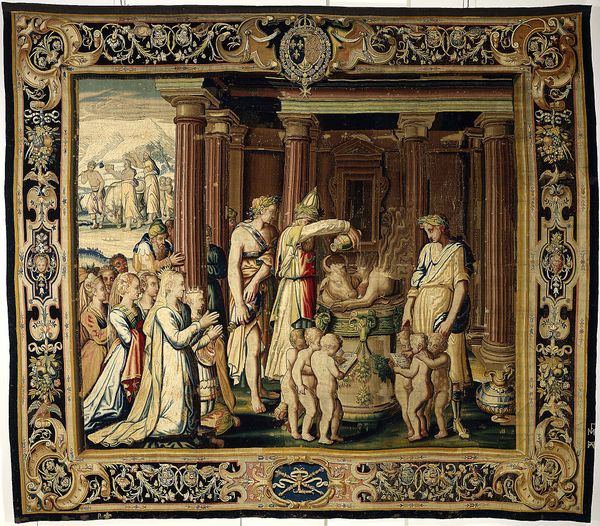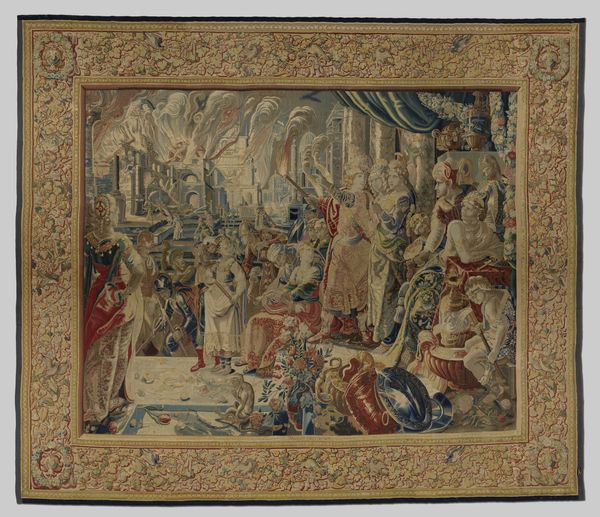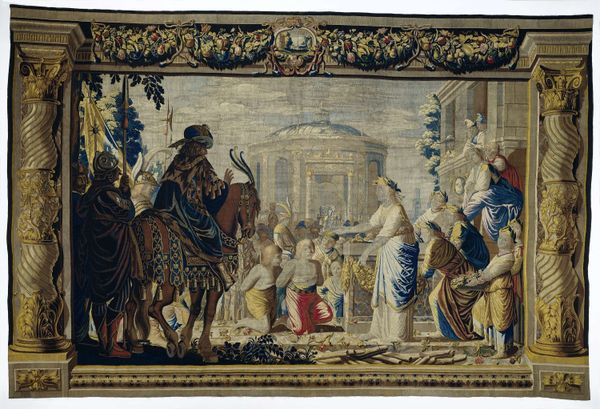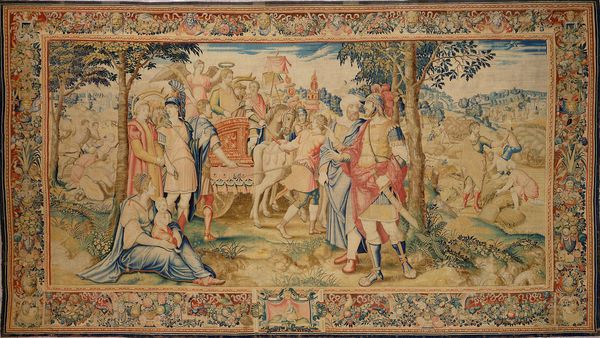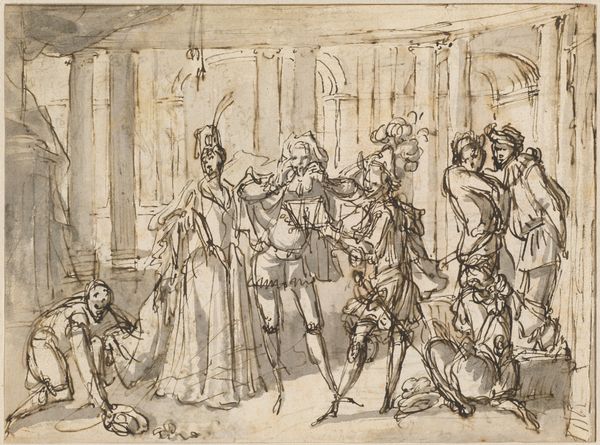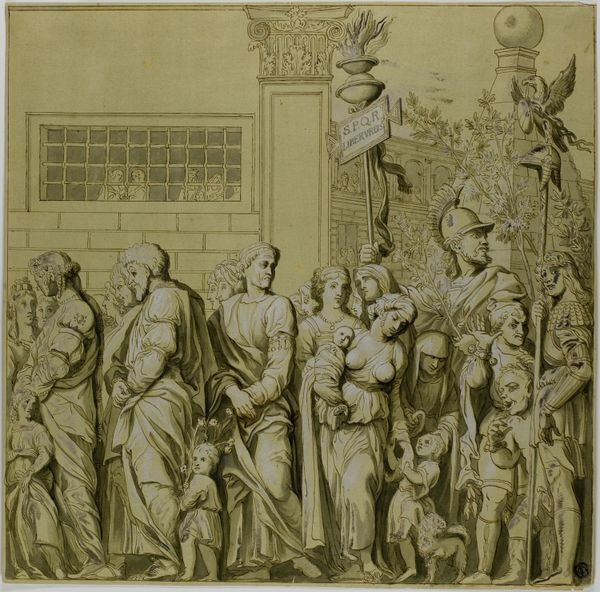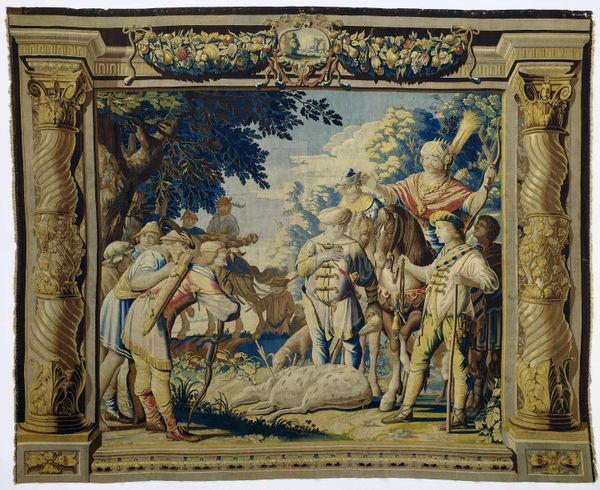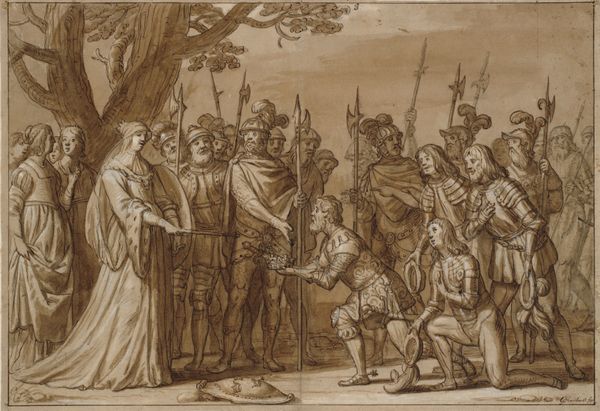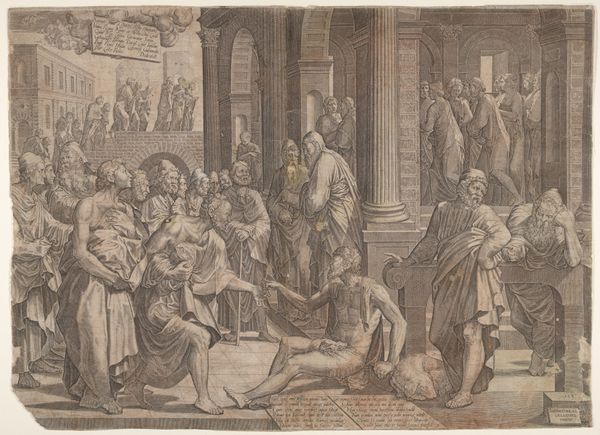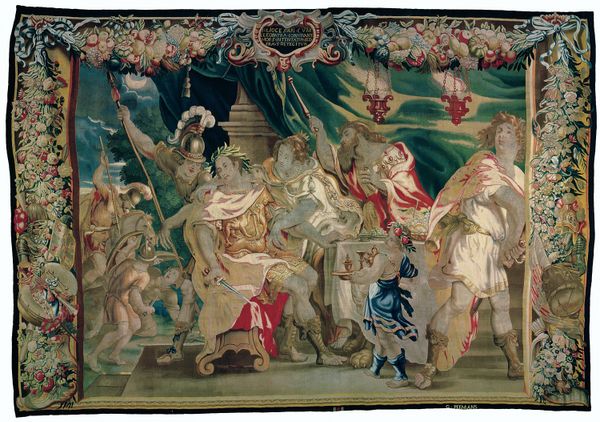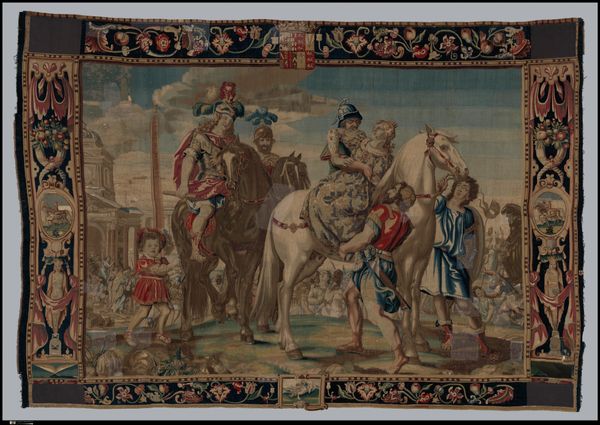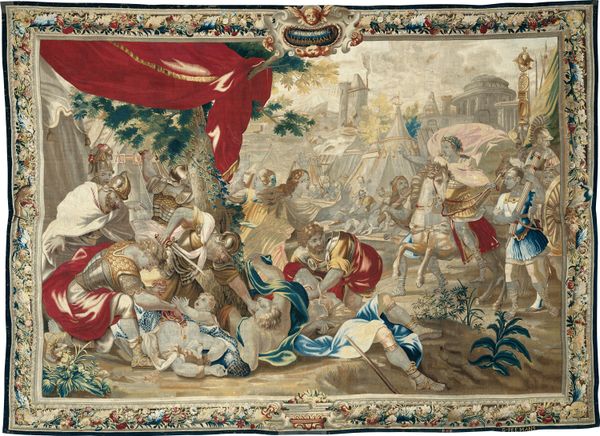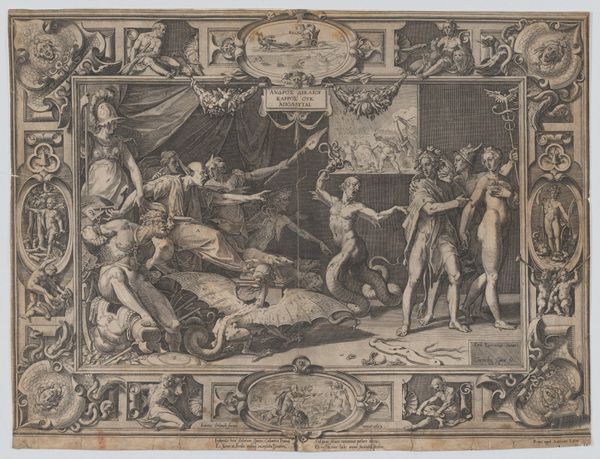
#
narrative-art
#
baroque
#
oil painting
#
history-painting
Dimensions: height 365 cm, width 562 cm
Copyright: Rijks Museum: Open Domain
Curator: What a stunning tapestry. Let’s take a look at "The Return of Orestes and Iphigenia to Aulis" by Pieter de Cracht, created somewhere between 1648 and 1662. The oil painting's been interpreted in the narrative-art form of tapestry. Editor: It strikes me immediately with its muted, almost solemn tone despite the grand subject. The figures are grouped closely, yet there’s a distinct separation between those being welcomed and those welcoming, hinting at the complexities behind this return. Curator: Absolutely. The subject matter originates from Greek tragedy. Can you think about the political climate surrounding that choice in subject matter? Let’s think about it: The story is set after Iphigenia’s near sacrifice. Her brother Orestes eventually arrives, they escape together and then there is a long delayed homecoming depicted here in this tapestry. We might wonder why De Cracht wanted to engage in it, or why his commissioners had that interest. Editor: It makes one consider issues like inherited trauma and the challenges of reintegration after periods of intense emotional and political turmoil. Were viewers meant to relate the emotional dynamics depicted to the context of that period? The baroque sensibility seems heightened through this focus: human experiences represented amidst dynamic and potentially chaotic social circumstances. Curator: Exactly. And consider where tapestries such as these might hang. Tapestries offered warmth to drafty rooms and offered to their viewers moral, classical narratives promoting societal health or offering lessons in monarchical government. De Cracht had the difficult job here of making that clear in his work while not over determining interpretation. He had to thread the narrative, offer clear morals and instruction to court. Editor: Thinking about this in today’s socio-political atmosphere, it is interesting how an artwork rooted in a specific historical context can spark meaningful dialogue around themes of power, violence, and redemption. Curator: Tapestries provide a unique, and accessible glimpse into not only mythology but also cultural expectations and practices within Baroque society. It underscores the power of narrative in shaping identities and reflecting collective experiences through something familiar to the wealthy that at the time defined good taste. Editor: Seeing this has made me rethink the power of art objects to create social and emotional touchstones throughout history. Curator: Me too! Tapestries remind us how the classical imagination can still have new dimensions opened within it and allow all of us new dialogues and interpretations today.
Comments
No comments
Be the first to comment and join the conversation on the ultimate creative platform.

